

These are the reviews from the Fall of 1998. For newer reviews, go back to the main book page.
 David Brin's "Uplift" universe is one of the boldest and most
detailed of recent science fiction. This new book concludes the
second Uplift trilogy, a series that began with
Brightness Reef and
continued with
Infinity's Shore.
The story had been gathering energy gradually, and that energy reaches
a blaze in this finale.
David Brin's "Uplift" universe is one of the boldest and most
detailed of recent science fiction. This new book concludes the
second Uplift trilogy, a series that began with
Brightness Reef and
continued with
Infinity's Shore.
The story had been gathering energy gradually, and that energy reaches
a blaze in this finale.
The first two books took place on the planet Jijo, where six races have stowed away, hiding from galactic society. Their peaceful existence is interrupted by the arrival of a dolphin-crewed starship Streaker, and in Heaven's Reach the dolphins and some of the Jijoans leave the planet seeking justice and resolution to a galactic crisis that began way back in Brin's classic Startide Rising.
The trilogy's plot is too big to summarize in a short review, but it is well crafted and intricate. The characters and alien races are almost all carried over from the first two books, with the addition of the introspective (and very funny) Harry Harms. While the characters are very good, the action is the most absorbing aspect of this book. There is a major upheaval going on in galactic society, and (perhaps expectedly) the long-suffering crew of the Streaker get pulled into the thick of it. The pace and scope of the action accelerate to amazing levels.
As the conclusion of a rich trilogy, Heaven's Reach requires a lot from the reader. With only four hundred pages to play with, the author has a lot of loose ends to tie up and doesn't spare much room for background. For the initiate, though, the book is a fine treat.
Conclusion: Recommended (best to read the trilogy in order)
Proper design of algorithms is a vital but rare skill for computer scientists. Several excellent books about algorithms exist, but this book provides a broader survey in a more compact package than any other I've seen. The author, Dr. Skiena, is a noted researcher and educator in the area of algorithm research.
The book is divided into two parts: a traditional algorithm textbook is packed into the first 160 pages, and an algorithm survey the next 250 pages. Here are some of the topics covered in the traditional section:
| - Fundamentals | - Problem Decomposition |
| - Graph algorithms | - Combinatorial search |
| - Intractable problems | - Heuristics and Approximations |
Most of the chapters include humorous but relevant anecdotes about applying algorithms effectively. The emphasis throughout the book is practicality and effectiveness, refreshing qualities for an academic text.
The algorithm survey comprises the bulk of the book. It is organized to help support a programmer who knows what problem they need to solve, but not what kind of algorithm they need to employ.
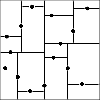 Each chapter is supported by extensive references to other books
and scholarly journals. Many of the concepts and procedures
are illustrated, although some of the illustrations are rough or
undetailed. The index and bibliography are excellent.
The book includes a CD-ROM packed with software,
the full contents of the web's largest algorithm site (the
Stony Brook Algorithm Repository), plus the full
hyperlinked text of the
book itself.
Each chapter is supported by extensive references to other books
and scholarly journals. Many of the concepts and procedures
are illustrated, although some of the illustrations are rough or
undetailed. The index and bibliography are excellent.
The book includes a CD-ROM packed with software,
the full contents of the web's largest algorithm site (the
Stony Brook Algorithm Repository), plus the full
hyperlinked text of the
book itself.
Publishers sometimes characterize computer books based on the expertise level of the expected reader. Springer-Verlag has not provided such a rating for this book, but in my opinion it should be marked 'Intermediate-Expert'. Dr. Skiena assumes that the reader has at least some undergraduate education in computer science. For the practicing computer scientist, though, the book's breadth of coverage and practical bent should prove both enjoyable and useful.
Conclusion: Conditionally Recommended
The successful Star Wars movies spawned a host of novelizations and spin-off stories. Kevin Anderson has been one of the more prolific writers of Star Wars stories, with one trilogy and several other stories and collaborations to his credit.
This particular story involves a cast of characters drawn from Anderson's successful Jedi Academy trilogy and Barbara Hambly's Children of the Jedi. The avaricious race of Hutts have acquired the plans to the Deathstar, as well as the services of one of its original designers. While Han Solo and Leia take on Durga the Hutt, some of Luke Skywalker's students are facing down armed fleets of a resurgent Empire. Plenty of action ensues, with a sprinkle of humor, all designed to entertain.
The serious side of the novel is Luke's relationship with the reincarnated Jedi named Callista. Already on precarious footing from previous books, Luke's well-meaning attempts to restore Callista's Jedi powers put the pair into dire trouble.
While all of Kevin Anderson's books are enjoyable to read, they don't have the depth or vision to be really great science fiction. The Star Wars novels by Timothy Zahn are better.
Conclusion: Recommended only for die-hard fans
We all recognize that living things and human artifacts seem to embody different technologies. Sometimes, it's easy to point to the contrasts, but how and why have these differences come about? The physical principles and design constraints of natural and man-made systems are the subject of this fascinating new book by Dr. Steven Vogel.
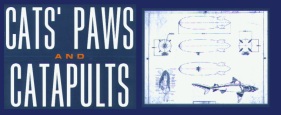
The second chapter presents some fundamental concepts of mechanics that are essential to understanding how all structures and their components work. It is a most lucid presentation of the important concepts of strain, shear, and stress. Throughout the book, Dr. Vogel is careful to provide all necessary background for each subject. His well-structured progression through the topics makes this detailed and technical book very easy to read.
Both biology and mechanical engineering depend heavily on diagrams, and the diagrams in this book are very good. Clearly labeled graphs and pictures support most of the complicated descriptions. Also, each chapter is replete with end-notes and references.
For anybody who has ever been amazed that the contrasts between man-made and natural system, this book will be an excellent survey of the area.
Conclusion: Highly recommended
When Alfred Bester died in 1987, he left several uncompleted works behind. Roger Zelazny took on the job of finishing the novel, and managed to do so before he died in 1995. Under the circumstances, it seems that this novel is the last dose of Bester or Zelazny that their fans are likely to get. Does it live up to the reputations of two of the most creative authors in the science fiction genre?
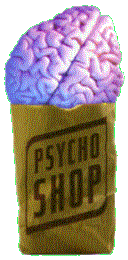 The main character is a reporter for an american style magazine,
sent to Rome to investigate reports of new hip joint. He manages
to meet the proprietor, and begins working with him at the
Psycho Shop - a place where people from all over history come
to exchange unwanted traits, talents, or afflictions for new ones.
The idea seems like something Alfred Bester would come up with,
but there's no real way of knowing whether it was he or Zelazny
that invented the place. As the reporter continues to
work with the shop's master and his mesmerizing assistant,
he becomes involved in a time-spanning plot to build a
god-like android with talents stolen from all over history.
The main character is a reporter for an american style magazine,
sent to Rome to investigate reports of new hip joint. He manages
to meet the proprietor, and begins working with him at the
Psycho Shop - a place where people from all over history come
to exchange unwanted traits, talents, or afflictions for new ones.
The idea seems like something Alfred Bester would come up with,
but there's no real way of knowing whether it was he or Zelazny
that invented the place. As the reporter continues to
work with the shop's master and his mesmerizing assistant,
he becomes involved in a time-spanning plot to build a
god-like android with talents stolen from all over history.
The ideas and writing seem reminiscent of both Bester's and Zelany's later works, including Bester's fascination with human talents and the human subconcious, and Zelazny's favorite devices like parallel universes and hidden identities. In a way, these two authors are a good mix. As Greg Bear states in the excellent introduction, they were both from the 'jazz' school of science fiction writing. The disciplined plot and character development that characterize more mainstream SF authors (e.g. ) are less important here; the medley of ideas is the main thing.
While Psycho Shop is a serious SF work, it also has some entertaining sprinkles of humor, as well as occasionally steamy romance and just a dash of violence. Despite being the work of two different authors and assorted editors, the story flows along very well. Any fan of gritty, intense, inventive SF writing should enjoy this book; it's a good colophon to two great careers.
Conclusion: Recommended
 In the last few years, there has been a spate of books
about relativity and cosmology by eminent physicists.
This recent entry by professor Sir Martin Rees of Cambridge
University is erudite, readable, and polished.
Sir Martin is the current Astronomer Royal of
the UK, and a noted researcher in galaxy formation and quasars.
In the last few years, there has been a spate of books
about relativity and cosmology by eminent physicists.
This recent entry by professor Sir Martin Rees of Cambridge
University is erudite, readable, and polished.
Sir Martin is the current Astronomer Royal of
the UK, and a noted researcher in galaxy formation and quasars.
The book covers a few topics that are old hat: the structure of the galaxy, the evolution of stars, and the big bang. Some of these things were also covered in Stephen Hawking's 1988 bestseller, A Brief History of Time. After the introductory material, Sir Martin launches into some more unusual and exciting ideas:
Some of the best reasoning in the book concerns how our universe came to be hospitable for life. From a cosmological perspective, conditions suitable for the emergence of life are really quite special, but that must be balanced against the fact that we happen to be here to observe it! Explaining these issues where astrophysics blurs into philosophy, making them understandable, is where Sir Martin really shines.
The only failing of this book, if it can be taken as such, is its length. I found myself disappointed that it was so short, that it was over so soon. It is difficult to reach a middle ground between scientific detail and accessibility to general readership; in my opinion Sir Martin errs slightly on the side of caution, omitting details that could have painted a richer picture.
There are bigger, more complete books about cosmology, astronomy, and physics available, but the eloquence and philosophical depth that grace this book set it among the best of them.
It is interesting to note that Hawking and Rees were schoolmates at Cambridge and worked together occasionally ever since. Prof. Hawking also wrote the introduction to this book.
Conclusion: Recommended
While the topics covered are useful, the depth and level of detail vary substantially. The discussion of threads is okay, but insufficiently detailed to support complex network service applications. Datagram sockets are omitted entirely from most Java books, but Java Networking and Communication covers them in great detail, with extensive code examples. The coverage of native methods is dedicated mostly to using native code to control a serial interface.
The code examples in the book are larger and more complex than most authors attempt, although some of them require a lot of background explanation. The web server example and the switchboard service example are particularly good.
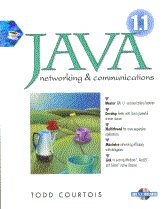 The cover of the book is emblazoned with 1.1
and the CD that comes with the book holds a copy of
JDK 1.1.2, but most of the book deals with Java 1.0.
The threads chapter describes several facilities
that are deprecated in 1.1, and the streams chapter
has only a few pages about object streams.
Worst of all, the chapter about native interfaces
deals only with the old, obsolete 1.0 native
interface scheme, not the new JNI specification.
The cover of the book is emblazoned with 1.1
and the CD that comes with the book holds a copy of
JDK 1.1.2, but most of the book deals with Java 1.0.
The threads chapter describes several facilities
that are deprecated in 1.1, and the streams chapter
has only a few pages about object streams.
Worst of all, the chapter about native interfaces
deals only with the old, obsolete 1.0 native
interface scheme, not the new JNI specification.
Despite its good code examples, this book is really an out-of-date volume with a few nips and tucks. A volume written from scratch for Java 1.1 will serve most programmers better.
Conclusion: Not Recommended
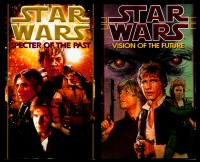 The popularity of the Star Wars saga has prompted several
authors to write science fiction novels set in that mileau, with
mixed results. Two of the most recent such novels, by noted
military science fiction author Tim Zahn, are among of the best.
The popularity of the Star Wars saga has prompted several
authors to write science fiction novels set in that mileau, with
mixed results. Two of the most recent such novels, by noted
military science fiction author Tim Zahn, are among of the best.
These books take place more than a decade after the Star Wars movies. The series title, The Hand of Thrawn, refers to the late imperial Admiral Thrawn, a commander and leader of legendary prowess. While Thrawn was killed in another novel several years before, the plot of these books is driven by two aspects of his legacy. For one, some renegade imperials are attempting to control what is left of the old galactic empire using a con man pretending to be Thrawn. For the second, remnants of forces planted on the outskirts of the galaxy by Thrawn are beginning to stir. To top is all off, revolt and civil war are building in the New Republic.
Zahn's talent is for building plot lines and events that seem confused and conflicted enough to be real, but directed and exciting enough to be interesting. This kind of variation shows up especially well in the second book, Vision of the Future, as various characters and groups look for way out of the republic's looming civil war, mostly involving searches for historical record of treachery called "The Caamas Document". In the meantime, Luke Skywalker is following his own clues toward the Hand of Thrawn, and along the way struggling with his role as a Jedi and his relationship with his sometimes ally Mara Jade. The action and conclusions, if not especially surprising, follow the Star Wars formula without being obvious, and make for quite a satisfying story.
These two books are not independent, they were obviously written to be read together, as if they were one long novel (roughly 900 pages). Probably the best course for a Star Wars fan is to buy both books and read them in one long sitting. Anybody else should probably wait until the second book is released in paperback.
Conclusion: Recommended
One of the best ways to create personal joy is to play pranks on co-workers. Most office denizens will already be familiar with this strategy. Scott Adams has collected a lot of fan mail over the years...some of the so-called pranks he describes in Chapter 5 are just amazing. Throughout the book, letters from fans and Dilbert strips are integrated very nicely into the text.
Another great way to create joy at work, according to Adams, is goofing off. There are lots of ways to do this, enumerated in Chapter 3. The book even includes great tips on sleeping at work. There is more good advice in the chapter about surviving meetings, including very original advice about 'interacting' with other attendees.
Like most of Adams' humor books, this very funny book contains a few very serious grains of wisdom. Most of them are concentrated near the end of the book. You might not expect to find real, useful tips on relating to management, using time, and finding creativity in a humor book, but there they are in Chapter 2 and 8.
Conclusion: Highly Recommended for oppressed cubicle dwellers

All reviews (c) 1998, Neal Ziring. Reviews may be reproduced in whole or
in part as long as authorship credit is preserved.
[Ziring
MicroWeb Home] [Neal
Ziring] [Julie
Ziring]
[Ziring Guestbook]
This page written by Neal Ziring, last modified 1/1/99.